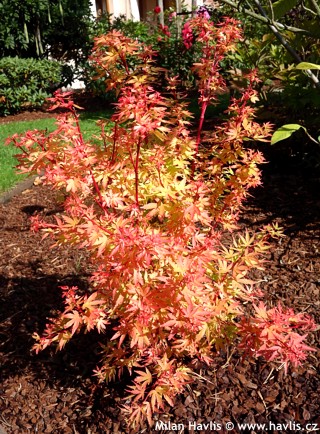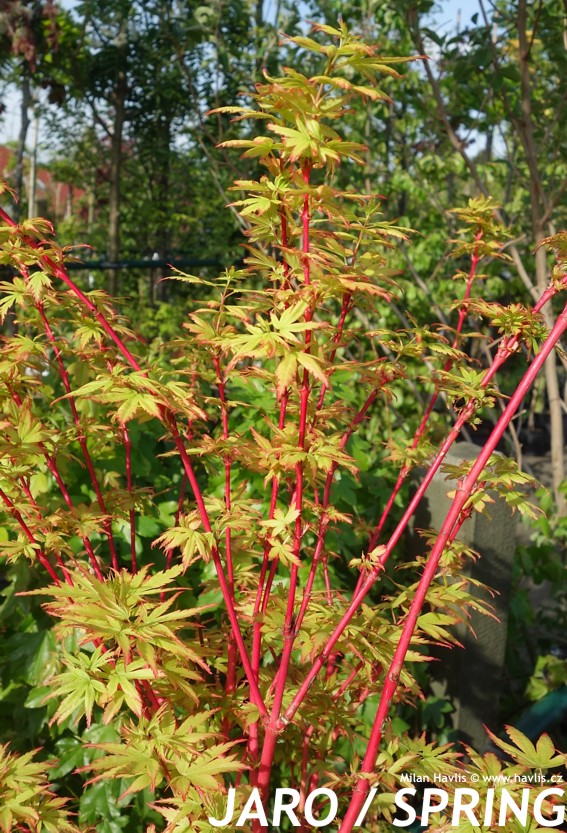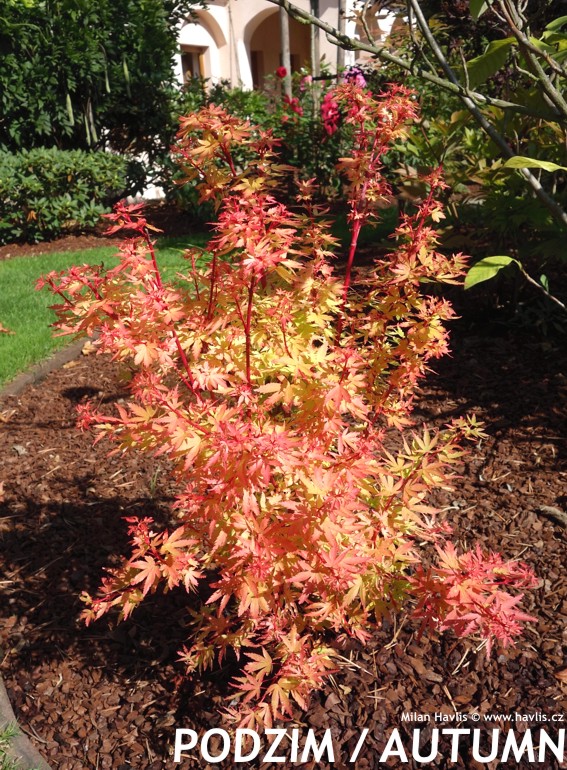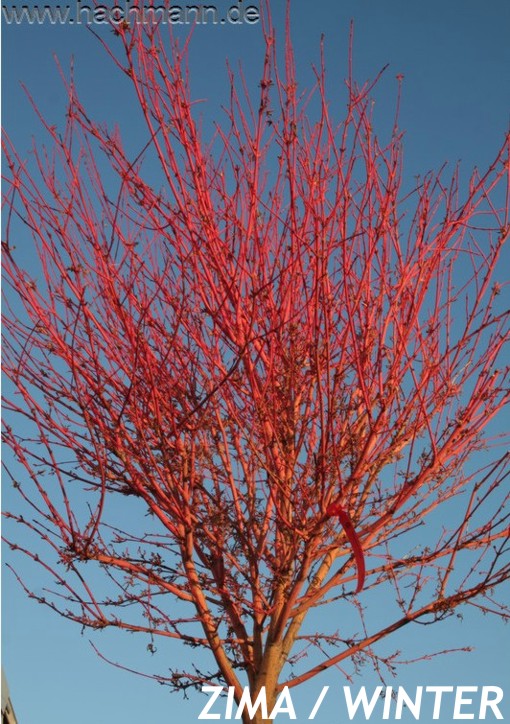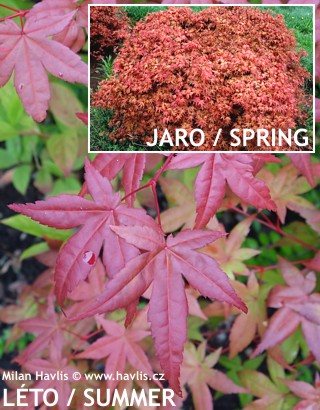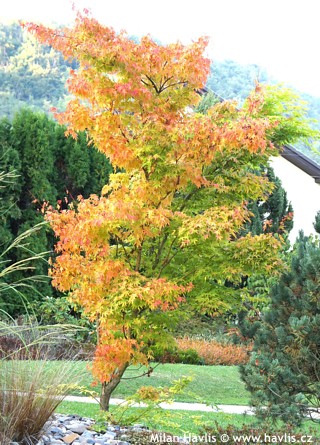Acer palmatum 'HERHAIM' Japanese maple
size/type
taller shrub,taller shrub
usual height
1,5-2m
usual width
1,5-2m
leaves
deciduous broadleaf
colour of leaves
location
full to partial sun
soil type
acidic (peaty)
soil moisture requirements
evenly moist (dislikes drought)
USDA zone (lowest)
5b (down to -27°C)
winter protection
for zone 5+6

for zone 7

categorized
Acer
Japanese maples are very decorative and usually low shrubs, occasionally small trees, with attractive foliage and picturesque structure. There are many varieties in various shades of green, chartreuse, golden and yellow, red to maroon, and even multicoloured (variegated). They originate from Asia (Japan, China, Korea), where they have been cultivated for at least two centuries or perhaps even longer, however, they were introduced to Europe only at the beginning of the 19th century, specifically to Great Britain in 1820. Interestingly, the botanist Carl Peter Thunberg described them much earlier, in 1784, because he undertook an expedition to Japan in 1775-1776, discovering new species and collecting seeds and plants. He named the tree Acer palmatum, referring to the leaf shape resembling a human hand with fingers, although it is said that they first reminded him of frog fingers, which is also one of its oldest Japanese names: kaede. The other is momiji (baby hands). The beauty of the colours and shapes of the leaves and trees is reflected in many arts, for example, in the oldest preserved collection of Japanese poetry from the 8th century, the Man'yōshū (Collection of Ten Thousand Leaves). The Chinese poet Wang Wei (699-759) celebrated their beauty in many of his works, and naturally, maples often appeared in ancient paintings, tapestries, porcelain, and wherever classic and traditional decorations associated with the symbolism of these maples were desired: beauty and elegance, serenity, endurance, vitality, and transformation.Description of the plant:
Herhaim is a breathtaking German variety of Japanese maple with cheerful colours. It is best renowned for its bright red and glossy branches which keep their colour all year round. In spring emerge deciduous, deeply palmate but not dissected, bright yellow-green leaves with rosy margins which mature to richer green shade that does not get dark but remains fresh until autumn when they turn vibrant shades in the best show of the season like an exuberant performer at Rio de Janeiro festival: vivid pink, soft salmon pink, orange and yellow. Herhaim maple forms a bushy and upright habit when young, forming an almost spherical shape with age. As it keeps a nice shape on its own it requires no or minimum pruning. Yet it can be pruned or trimmed, best in frost-free periods of winter.
Japanese maples need constantly moist soil that has to be well-drained, acidic to neutral, and medium fertile. Keep it mulched all year round. It will love a location with high air humidity, e.g. at a river bank or near a pond but it is not a must. Grow it in full sun for best colour. Fully hardy to min. -27°C (USDA zone 5b).
Last update 16-10-2018
QUICK PRICE OVERVIEW
CURRENTLY SOLD OUT












